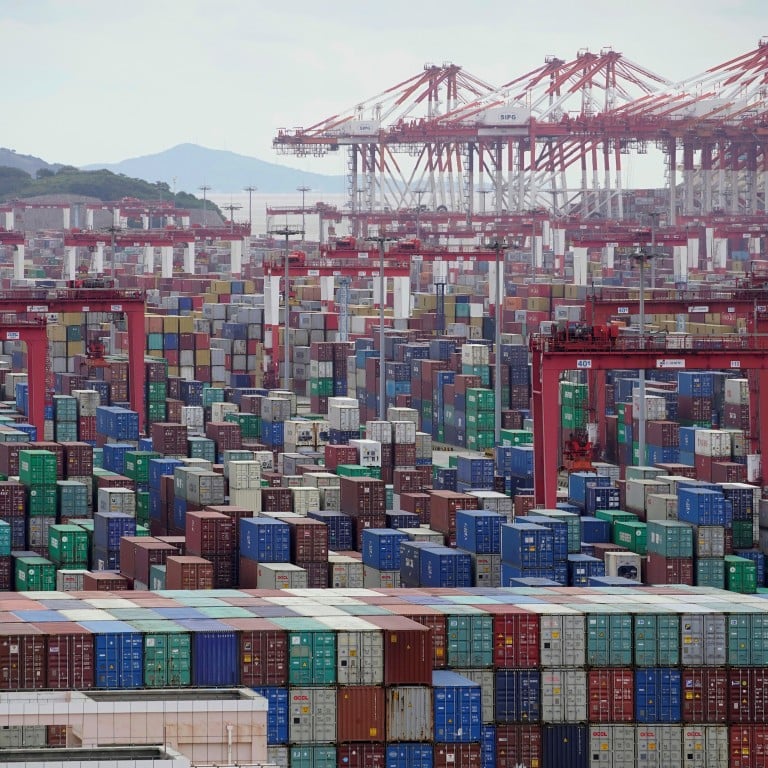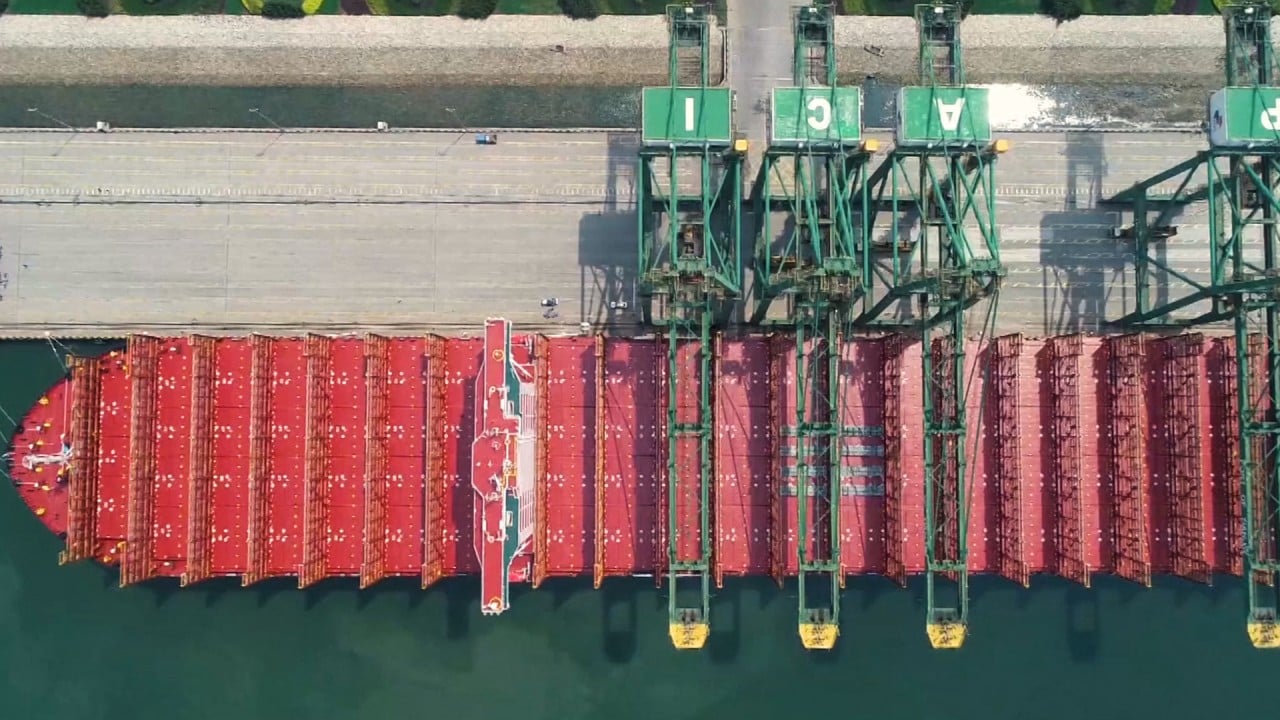
China’s carbon neutral goal: Shanghai’s Yangshan port to embrace hydrogen fuel-cell batteries at automated terminal
- Terminal introduced at the end of 2017 will replace existing energy sources with the batteries, operator Shanghai International Port Group says
- SIPG’s efforts showcase China’s determination to meet its carbon-neutrality goal for 2060: analyst
Shanghai’s Yangshan Deep-Water Port, the world’s largest container port, plans to power automated vehicles and handling equipment with low-emission hydrogen fuel-cell batteries, to reduce its carbon emissions.
“As the world’s largest port, SIPG’s efforts to reduce carbon emissions are of great significance, since they showcase China’s determination to meet its carbon-neutrality goal for 2060,” said Lu Ming, an agent with Shanghai Ocean Shipping Agency. “New technologies and big investment will be needed to power the whole fourth-phase terminal.”
SIPG said on Friday a production base for the batteries will be built in the next two to three years.
The terminal, built at a cost of 12.8 billion yuan (US$1.95 billion) has seven berths that span 2,350 metres of harbour space. SIPG says it is the world’s largest fully-automated container terminal with 130 automated guided vehicles.
Last year, the terminal handled 4.3 million teus (Twenty-foot equivalent units) of containers, up 28 per cent year on year. Its handling volume is expected to rise by more than 16 per cent to 5 million teus this year, SIPG said.
The operator also said an onshore clean-energy power-supply system will be set up to support vessels berthing at the terminal. Energy-efficient lighting, solar-assisted heating and power monitoring systems will be used at the terminal to better protect the environment.
Since 2018, Shanghai has required vessels to comply with the IMO 2020 rule, under which the International Maritime Organisation forced ocean carriers to resort to low-sulphur fuel as a way of drastically cutting sulphur emissions.
China is responsible for 10 billion tonnes of carbon dioxide emissions annually, or about 30 per cent of the global total. To achieve its ambitious targets, Beijing will have to curtail most fossil fuel production facilities and drastically install more equipment to harness clean and renewable energy sources in nature.




